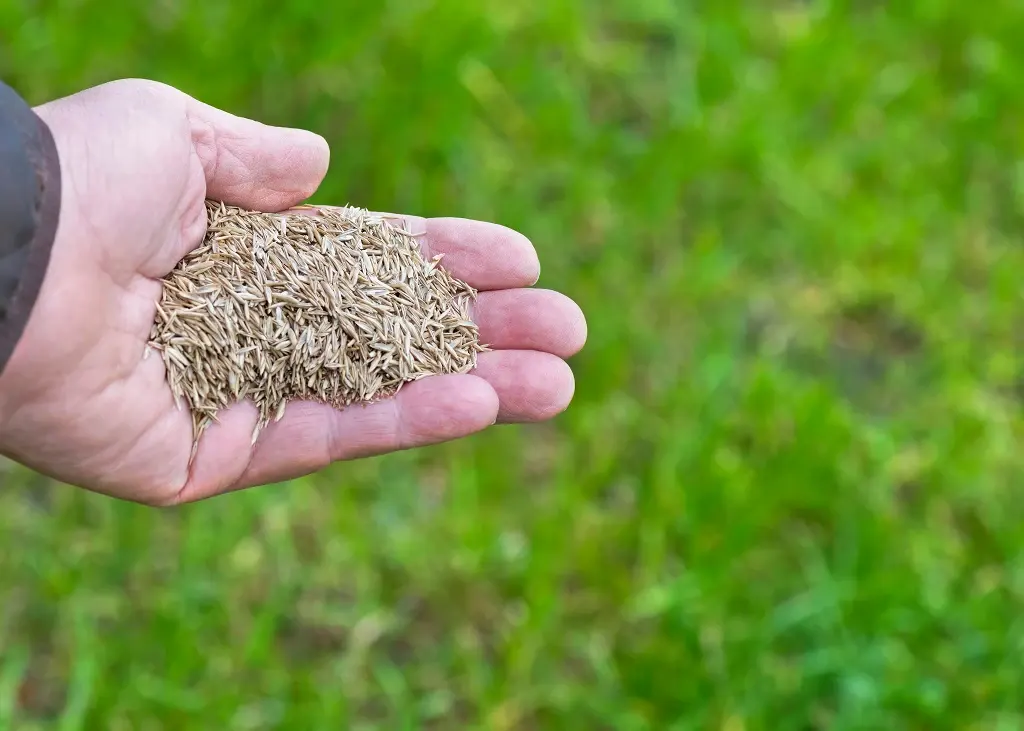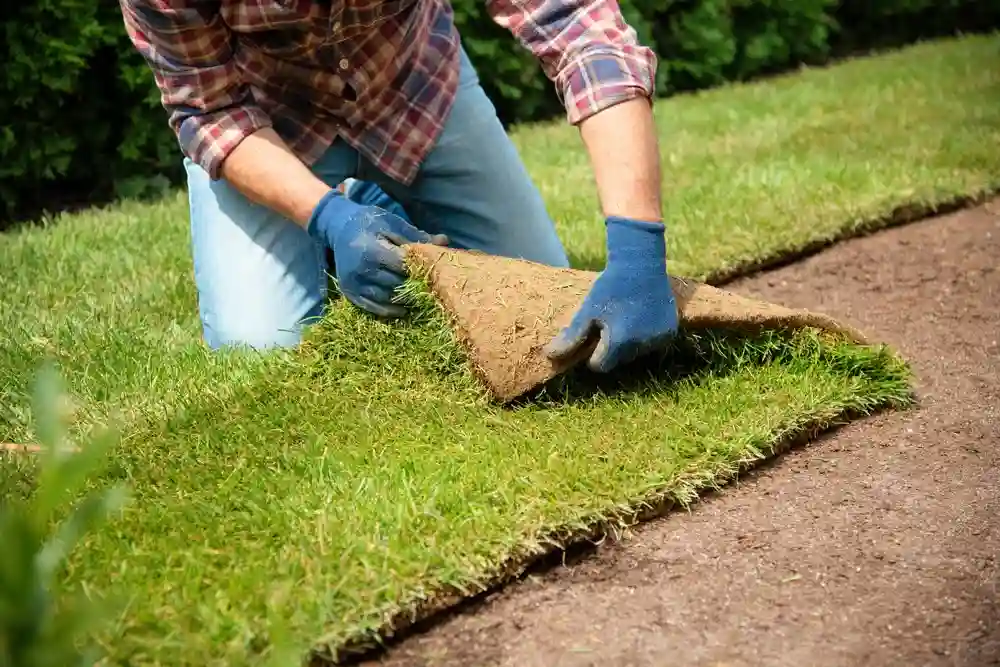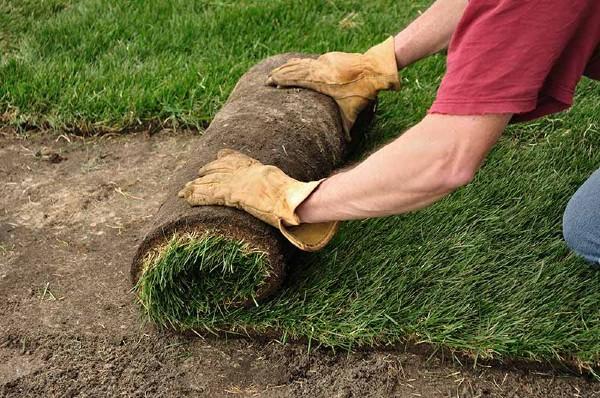Hey there! So, you’ve got yourself a slice-seeded lawn in Tilton? Awesome choice! Now, let’s chat about aftercare. Think of it like this: you’ve just planted the seeds, and now it’s time to give them a little TLC to help them grow into a lush, green carpet. Aftercare involves a few key steps like watering regularly, but not too much (you don’t want to drown those little seedlings!), keeping foot traffic to a minimum, and maybe even giving them a gentle feeding with some fertilizer. Stick around, Superior Hydroseeding Liquid Lawns walk you through all the ins and outs of keeping your new lawn looking top-notch!
Watering:
When it comes to watering your slice-seeded lawn in Tilton, it’s essential to strike the right balance. Newly seeded areas require consistent moisture to support germination and early growth, but overwatering can be just as detrimental as underwatering. Aim to keep the soil consistently moist by watering regularly, especially during the initial stages of seed germination. However, be cautious not to saturate the soil, which can lead to seed rot and other issues. Shallow, frequent watering is often more effective than infrequent deep watering, as it encourages the development of shallow root systems and promotes even germination across the seeded area. Monitor soil moisture levels regularly and adjust your watering schedule as needed based on weather conditions and the specific needs of your lawn. Remember, the goal is to provide just the right amount of water to support healthy seedling growth without drowning or waterlogging the newly seeded area.
Minimize Foot Traffic:
Minimizing foot traffic on your slice-seeded lawn in Tilton is crucial for ensuring successful establishment and growth. Newly seeded areas are delicate, with young grass seedlings just beginning to take root. Excessive foot traffic can compact the soil, disrupt seed germination, and damage tender plants, leading to uneven growth and patchy areas in your lawn. To protect your newly seeded lawn, consider placing temporary barriers or signs to discourage people and pets from walking on the seeded area. If possible, designate alternate paths or routes to minimize traffic over the freshly seeded turf. By reducing foot traffic during the critical establishment phase, you’ll give your slice-seeded lawn the best chance to develop into a healthy, lush carpet of grass.

Fertilization:
Fertilization plays a vital role in nurturing slice-seeded lawns in Tilton, providing essential nutrients to support healthy growth and development. Role of soil testing in successful slice seeding: Opt for a starter fertilizer specifically formulated for new grass seedlings, as it typically contains higher levels of phosphorus, which aids in root establishment. Follow the manufacturer’s instructions carefully regarding application rates and timing to avoid over-fertilization, which can damage delicate young plants. Generally, it’s best to apply fertilizer shortly after seeding or once the grass has begun to germinate, ensuring that nutrients are readily available to support early growth. Regular fertilization throughout the growing season can further promote a dense, healthy lawn, but be mindful not to apply excess fertilizer, as it can leach into groundwater or runoff into nearby water bodies. With proper fertilization, you’ll provide your slice-seeded lawn with the nutrients it needs to thrive and flourish in Tilton’s environment.
Mowing:
- Timing:
- Wait until the new grass reaches a height of 3-4 inches before mowing for the first time.
- This allows the grass to establish a healthy root system and ensures that it’s strong enough to withstand mowing.
- Frequency:
- Initially, mow the lawn infrequently to avoid stressing the young grass seedlings.
- As the grass becomes established, gradually transition to a regular mowing schedule, typically once a week during the growing season.
- Mower Setting:
- Set the mower blades to a higher cutting height to avoid cutting the grass too short, which can weaken the plants and make them more susceptible to stress and disease.
- Adjust the cutting height based on the grass species and its recommended mowing height.
- Sharp Blades:
- Ensure that the mower blades are sharp to achieve clean, precise cuts.
- Dull blades can tear the grass instead of cutting it cleanly, leading to a ragged appearance and increased susceptibility to disease.
- Clipping Management:
- Leave grass clippings on the lawn whenever possible, as they can act as a natural fertilizer, returning nutrients to the soil as they decompose.
- However, if clippings are excessive or clump together, consider bagging them to prevent smothering the grass.
- Alternate Patterns:
- Vary mowing patterns with each session to prevent grass from leaning in one direction and to promote upright growth.
- Alternating mowing directions also helps to reduce soil compaction and minimize wear patterns on the lawn.
Weed Control:
Effective weed control is crucial for maintaining the health and appearance of a slice-seeded lawn in Tilton. Maximizing the benefits of aeration and slice seeding: Newly seeded lawns are particularly vulnerable to weed invasion as they establish, so it’s essential to implement proactive strategies to keep weeds at bay. Regularly inspect the lawn for any signs of weed growth and promptly remove any weeds by hand or using a spot treatment herbicide that is safe for new grass. It’s important to avoid using broad-spectrum herbicides during this phase, as they can harm the young grass along with the weeds. Additionally, promoting dense grass growth through proper watering, fertilization, and mowing practices can help suppress weed growth by shading out weed seeds and depriving them of the resources they need to thrive. By staying vigilant and employing targeted weed control measures, you can ensure that your slice-seeded lawn remains free from unsightly weeds and maintains its lush, uniform appearance in Tilton.

Patience:
Patience is key when it comes to nurturing a slice-seeded lawn in Tilton. Establishing a new lawn from seed takes time, and it’s important to manage expectations accordingly. While you may be eager to see lush green grass covering your yard, it’s essential to understand that the process of germination, growth, and establishment can take several weeks or even months. During this time, it’s normal for the lawn to undergo phases of uneven growth and patchiness. By practicing patience and allowing the grass to grow at its own pace, you give it the time it needs to develop strong root systems and fill in any bare spots naturally. Resist the temptation to rush the process with excessive watering, fertilization, or mowing, as this can actually hinder rather than help the lawn’s development. Trust in the process, stay consistent with your maintenance routine, and before long, you’ll be rewarded with a healthy, vibrant slice-seeded lawn that enhances the beauty of your outdoor space in Tilton.
Aeration:
Aeration is a critical aspect of maintaining a healthy slice-seeded lawn in Tilton. Slice Seeding for Renovating Athletic Fields: This process involves perforating the soil with small holes to alleviate compaction and improve air, water, and nutrient penetration to the grassroots. For slice-seeded lawns, aeration becomes especially beneficial once the grass has established itself. Core aeration, in particular, can help promote robust root growth and overall turf health by allowing oxygen and water to reach deeper into the soil. This practice also aids in breaking up thatch buildup, which can hinder the development of new grass seedlings. Timing aeration appropriately, typically during the growing season when the grass is actively growing, ensures maximum benefit. By incorporating aeration into your lawn care regimen, you’ll create an optimal environment for your slice-seeded lawn to thrive and flourish in Tilton’s environment.
Pest and Disease Management:
- Regular Inspection:
- Routinely inspect the lawn for signs of pests and diseases, including discolored or chewed foliage, holes in leaves, or unusual patterns of growth.
- Early detection allows for prompt intervention and minimizes potential damage to the lawn.
- Integrated Pest Management (IPM):
- Implement an IPM approach that combines cultural, mechanical, and biological methods to manage pests and diseases effectively.
- This may include practices such as promoting healthy soil, proper watering and fertilization, and introducing natural predators of pests.
- Selective Treatment:
- Use targeted treatments for specific pests and diseases when necessary, rather than applying broad-spectrum pesticides that can harm beneficial organisms and disrupt the lawn’s ecosystem.
- Choose products labeled for use on the particular pest or disease affecting your lawn and follow application instructions carefully.
- Resistant Varieties:
- Select grass varieties known for their resistance to common pests and diseases prevalent in your area.
- Resistant varieties can help reduce the likelihood of pest and disease problems and minimize the need for chemical interventions.
- Sanitation:
- Practice good lawn hygiene by removing debris, thatch, and dead plant material regularly.
- Keeping the lawn clean discourages pests and diseases from establishing and spreading.
- Monitoring and Record-Keeping:
- Keep records of pest and disease occurrences, treatments applied, and their effectiveness.
- Monitoring trends over time helps inform future management decisions and allows for early intervention in case of recurring issues.

Seasonal Maintenance:
Seasonal maintenance is crucial for the long-term health and appearance of a slice-seeded lawn in Tilton. As the seasons change, so do the needs of your lawn, and adjusting your maintenance practices accordingly is essential. During the growing season, typically spring through fall, focus on tasks such as regular watering, mowing, and fertilization to promote healthy growth and vigor. In the summer months, pay particular attention to watering, ensuring that your lawn receives enough moisture to withstand heat stress and drought. As temperatures cool in the fall, consider overseeding thin or bare spots to encourage denser growth and fill in any gaps. In the winter, adjust your maintenance routine to include tasks like clearing debris and snow from the lawn to prevent damage and allow for proper air circulation. By staying proactive and adapting your maintenance efforts to the changing seasons, you’ll help your slice-seeded lawn thrive year-round in Tilton’s climate.
FAQ’s:
What to do after slice seeding?
After slice seeding, water the area regularly, minimize foot traffic, and provide proper fertilization for optimal germination and establishment of the new grass.
What is a slice seeder for a new lawn?
A slice seeder is a machine that simultaneously cuts grooves into the soil and deposits seeds, facilitating efficient seeding for establishing a new lawn.
What does seeding do to your lawn?
Seeding your lawn helps to establish new grass plants, filling in bare spots, thickening the turf, and promoting a lush, healthy lawn.
How does seeding work?
Seeding involves spreading grass seeds evenly over prepared soil, followed by watering to initiate germination and growth of new grass plants.
What is difference between seed and seeding?
The “seed” refers to the individual grass or plant reproductive unit, while “seeding” refers to the action of sowing or planting seeds to establish new growth.
CONCLUSION:
In conclusion, the aftercare requirements of slice-seeded lawns in Tilton are essential for ensuring successful establishment and long-term health. By following practices such as proper watering, minimizing foot traffic, fertilization, mowing, weed control, patience, aeration, pest and disease management, and seasonal maintenance, homeowners can nurture their slice-seeded lawns to become lush, vibrant, and resilient green spaces. With dedication and attention to detail, Tilton residents can enjoy the beauty and functionality of their slice-seeded lawns for years to come.

